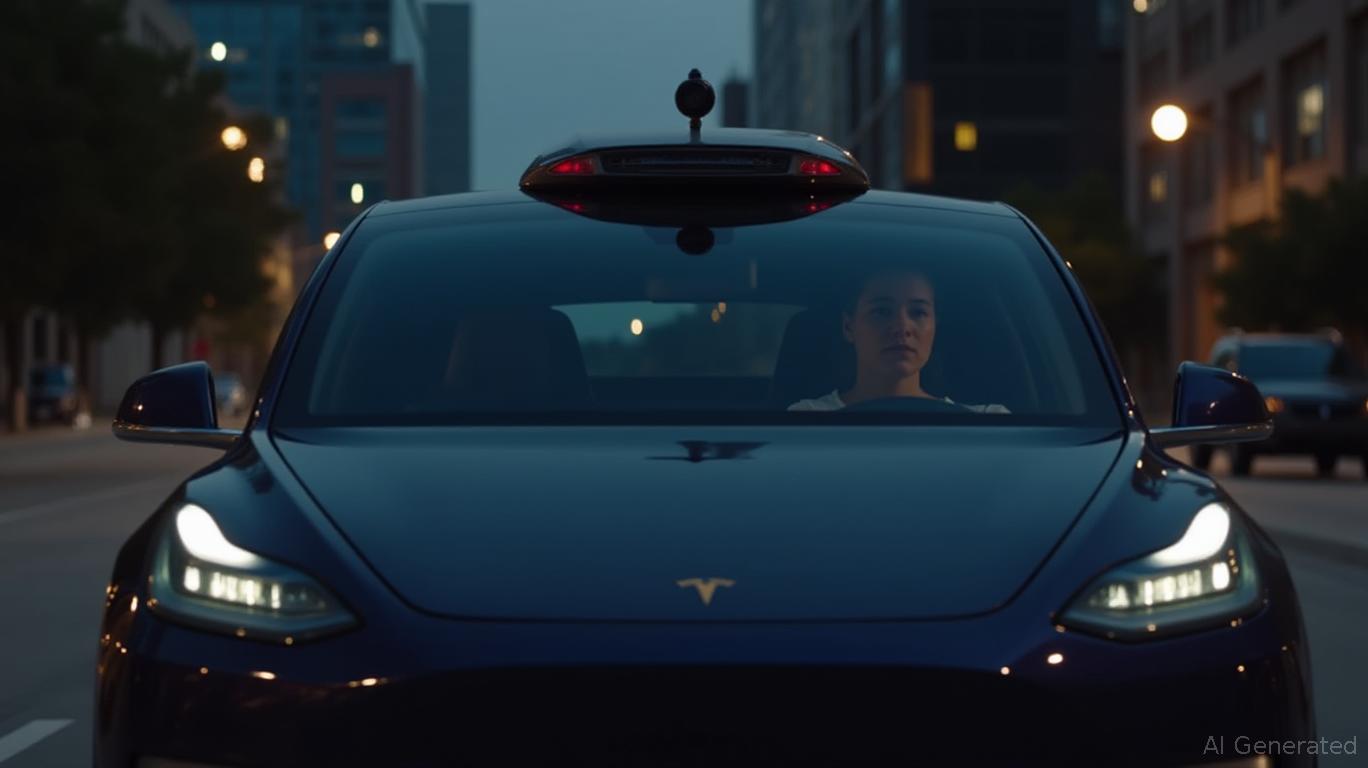Tesla's Robotaxi Launch: Catalyst for Disruption or a Hype-Driven Detour?
Oliver BlakeMonday, Jun 23, 2025 5:18 am ET
On June 22, 2025,

### The Disruption Play: Camera vs. Lidar
Tesla's bet on camera-based autonomy stands in stark contrast to rivals like Waymo and Cruise, which rely on lidar sensors for 3D mapping. This decision is both a strategic advantage and a gamble. Lidar-heavy systems cost upwards of $100,000 per vehicle, while Tesla's approach uses existing hardware—cameras and onboard computers—already standard in its cars. By avoiding lidar, Tesla aims to democratize autonomous driving, slashing costs and enabling mass deployment.
Analysts argue this simplicity could disrupt the market. “Tesla's FSD stack is a software play, not a hardware race,” says Wedbush's Dan Ives, who predicts the Robotaxi service could add $2 trillion to Tesla's valuation by 2026. Yet skeptics point to flaws. The Dawn Project's damning report revealed Tesla's system failed to recognize school buses and misjudged pedestrian distances—critical gaps in a world where regulators demand perfection.
Data note: Tesla's stock has fluctuated wildly since 2023, rising during Musk's “full self-driving” claims and falling on NHTSA investigations and missed milestones.
### The Skeptic's Checklist: Musk's Timeline vs. Reality
Investors have long questioned Musk's ability to deliver on aggressive timelines. The Austin Robotaxi launch, originally slated for 2022, has already been delayed multiple times. While Tesla claims 100% autonomous driving by 2025, its track record includes missed targets like the 2020 “L5 autonomy” promise.
This time, Tesla is hedging its bets. The initial rollout limits operations to geofenced areas in Austin, employs onboard safety monitors, and restricts access to invited users—a far cry from Musk's vision of a global, driverless network. The service's invite-only App, requiring strict terms (no vaping, no illegal activities), suggests Tesla is prioritizing compliance over rapid scaling.
Regulatory hurdles loom large. Texas lawmakers have demanded Tesla delay the launch until September 1 to comply with new laws mandating Level 4 autonomy certifications. Tesla's defiance, insisting its safety protocols suffice, underscores its willingness to push boundaries—even at legal risk.
### Scalability: A Long Road Ahead
The Robotaxi's success hinges on scaling beyond Austin. Tesla plans to expand to Los Angeles and San Francisco, but geofencing and hardware limitations may slow progress. Waymo, by comparison, already operates in 30+ U.S. cities with lidar-equipped vehicles. Meanwhile, Tesla's FSD system still struggles with edge cases, such as snow-covered roads or unmarked intersections—a problem its camera-based tech may never fully resolve.
Safety concerns are existential. NHTSA's ongoing probe into 47 FSD-linked crashes and the Dawn Project's findings highlight risks. If public trust erodes, the Robotaxi could become a liability rather than a revenue driver.
### Valuation and Revenue: A High-Stakes Gamble
Tesla's valuation already assumes massive upside from autonomy. A successful Robotaxi service could turn its vehicles into profit-generating “computers on wheels,” with ride-hailing revenue adding to existing sales. However, investors must weigh this potential against Tesla's current struggles: declining margins, battery cost pressures, and competition in EV markets.
The $2 trillion target feels ambitious, but Musk's track record of “impossible” achievements—from Gigafactories to Starlink—cannot be ignored. If Tesla's autonomy matures faster than critics expect, the Robotaxi could become a defensible moat.
### The Bottom Line: Buy the Dip or Wait for Proof?
Tesla's Robotaxi launch is a pivotal moment, but investors should proceed with caution. The camera-based approach could disrupt autonomous tech, but execution risks are high. Regulatory pushback, safety flaws, and Waymo's lead in lidar-driven systems pose significant headwinds.
For now, Tesla's stock remains a “wait-and-see” play. Aggressive investors might dip into shares on dips below $200 (current price as of June 2025: $220), betting on long-term autonomy upside. Conservative investors should wait for concrete metrics: ride volume growth, regulatory approvals beyond Austin, and FSD reliability data.
The Robotaxi is not a turning point—it's a starting line. Only time will tell if Tesla's gamble pays off or becomes another chapter in the saga of overhyped tech.
Disclaimer: The news articles available on this platform are generated in whole or in part by artificial intelligence and may not have been reviewed or fact checked by human editors. While we make reasonable efforts to ensure the quality and accuracy of the content, we make no representations or warranties, express or implied, as to the truthfulness, reliability, completeness, or timeliness of any information provided. It is your sole responsibility to independently verify any facts, statements, or claims prior to acting upon them. Ainvest Fintech Inc expressly disclaims all liability for any loss, damage, or harm arising from the use of or reliance on AI-generated content, including but not limited to direct, indirect, incidental, or consequential damages.

Comments
No comments yet